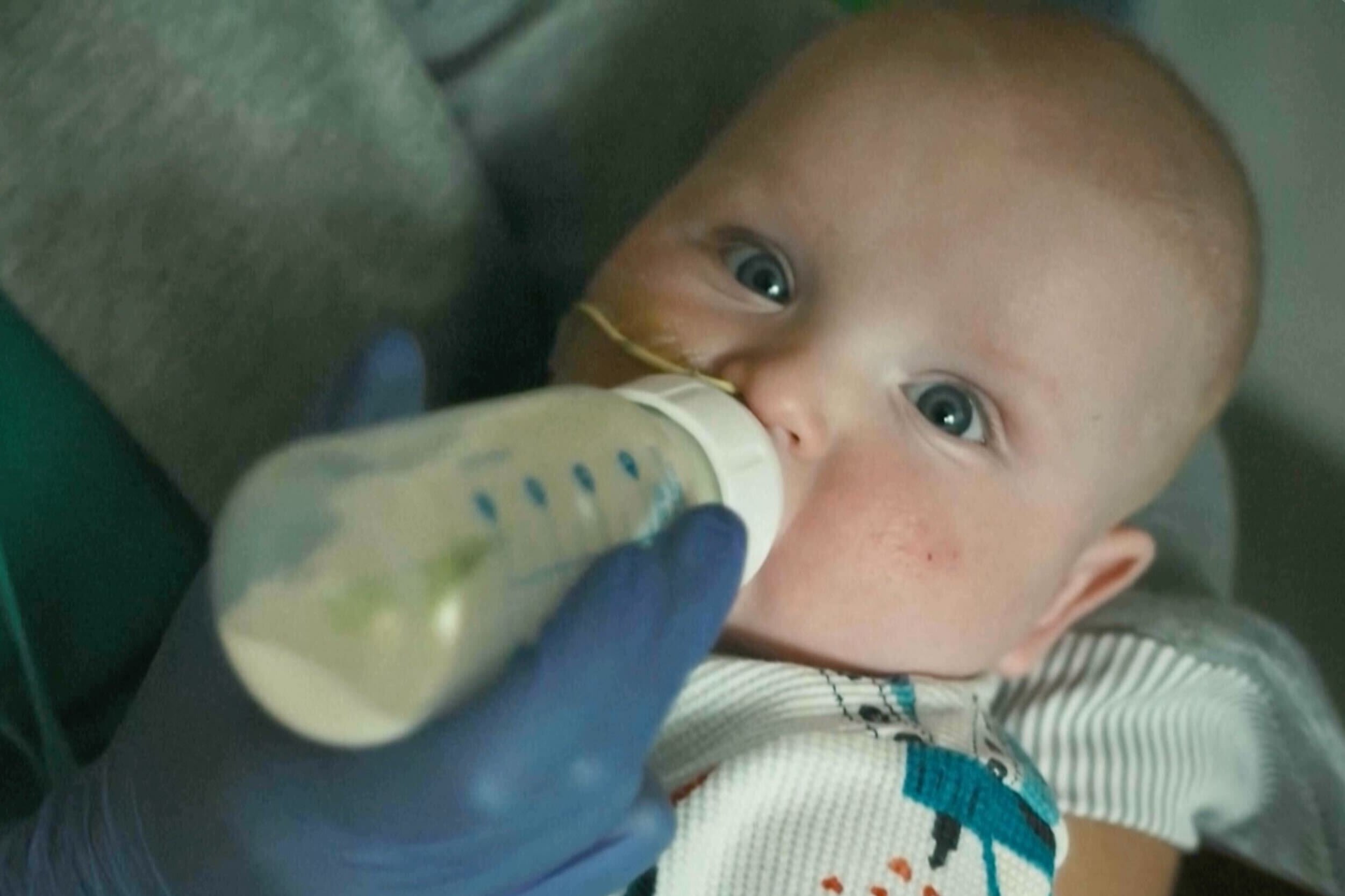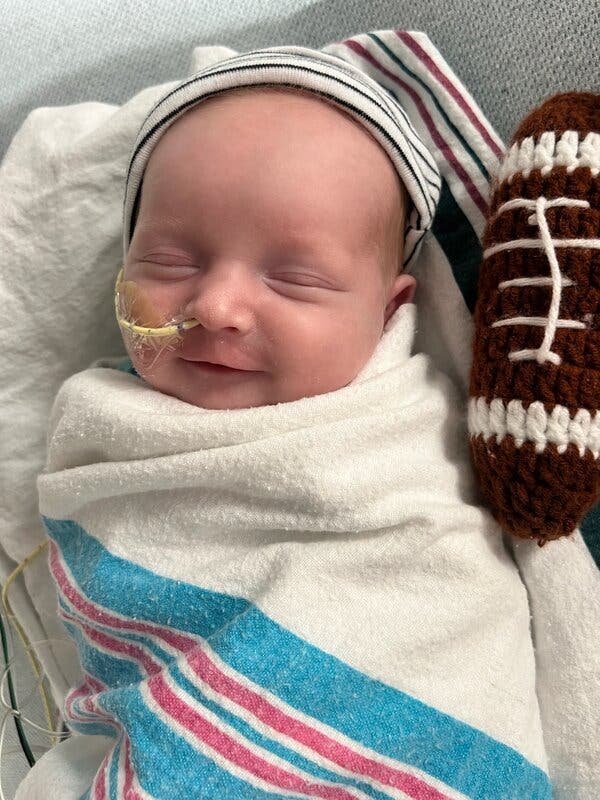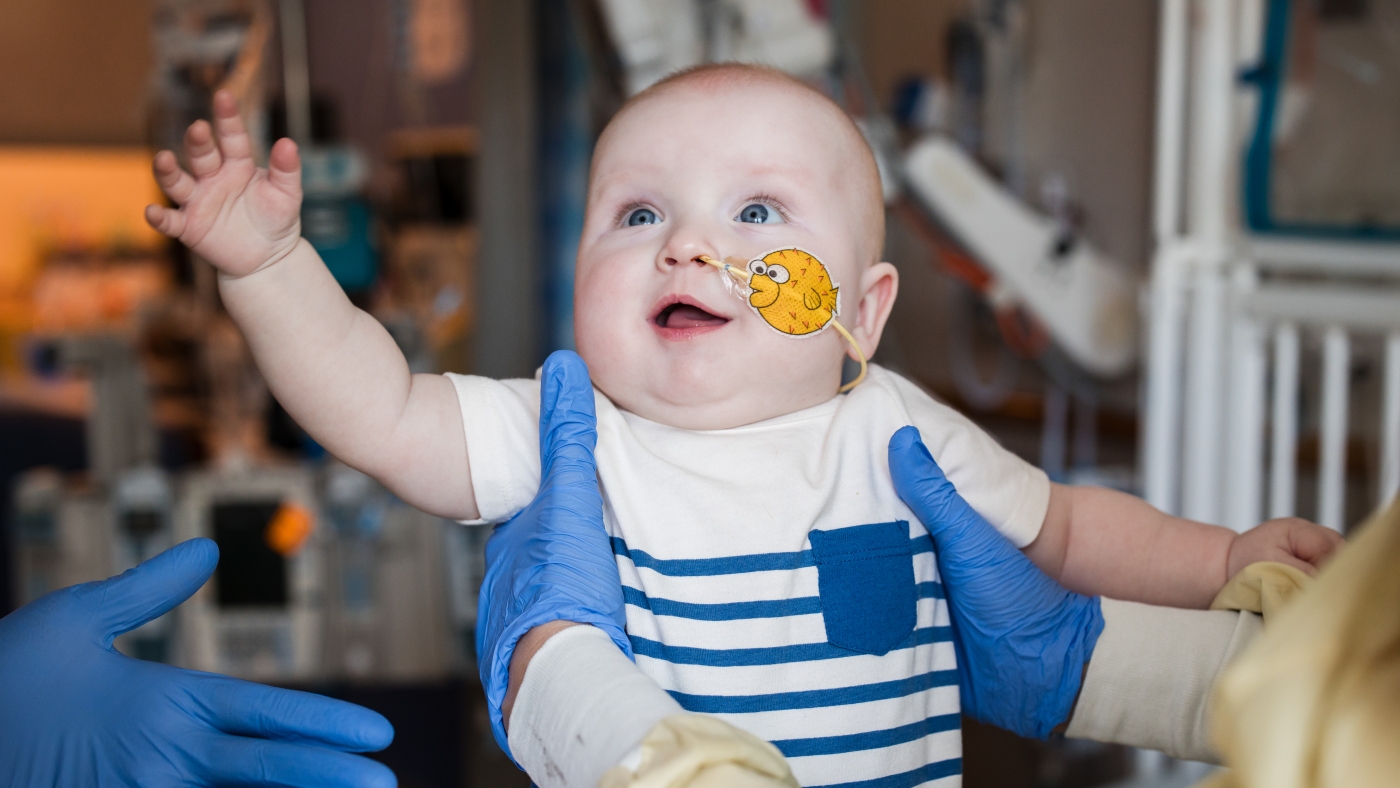## From Pixels to Reality: Gene Editing Heals a Baby, Bringing Sci-Fi Dreams Closer
Remember those epic RPGs where a single gene tweak could unlock superhuman abilities or cure deadly diseases? Well, buckle up, gamers, because real life just took a page out of our favorite virtual worlds. A groundbreaking new treatment, utilizing the revolutionary power of gene editing, has just been used to heal a baby suffering from a rare genetic disorder. This isn’t just some headline-grabbing tech; it’s a leap forward into a future where the lines between fantasy and reality blur, and the potential for curing previously incurable diseases becomes a tangible possibility.

A Microscopic Army: The Billions of Gene-Editors and Their Targeted Journey to Repair KJ’s Liver
Precision Strikes: Targeting the Root of the Problem

The case of KJ Muldoon, a baby born with CPS1 deficiency, marks a pivotal moment in medical history. This rare genetic disorder, affecting only one in 1.3 million babies, poses a significant threat to survival. Doctors at Children’s Hospital of Philadelphia (CHOP) offered KJ’s parents comfort care, acknowledging the grim prognosis. However, KJ’s parents chose to give their son a chance, embracing an experimental gene-editing therapy tailored specifically to his unique mutation.
The therapy involved three infusions of billions of microscopic gene-editors, meticulously designed to target the faulty gene responsible for KJ’s condition. Imagine an army of microscopic soldiers, each programmed to locate and repair a specific defect in the genetic code. These gene-editors, guided by their precise instructions, journeyed to KJ’s liver, the primary site of the mutation, and set about correcting the underlying genetic error.

A Beacon of Hope: Early Results and Future Possibilities
Turning the Tide: The Positive Impact of the Gene-Editing Treatment on KJ’s Condition
The early results are nothing short of remarkable. KJ’s condition has shown significant improvement, with doctors observing a reduction in the risk of brain damage, a potentially devastating consequence of CPS1 deficiency. This breakthrough offers a glimmer of hope for babies born with this rare disorder, suggesting that gene-editing therapy could not only improve their quality of life but also potentially save their lives.

Unlocking the Potential: Implications of This Breakthrough for Treating Other Rare Genetic Disorders
The success of KJ’s treatment has far-reaching implications for the future of medicine. It demonstrates the immense potential of gene-editing technology to address a wide range of rare genetic disorders that previously had no effective treatment options. Imagine a world where genetic diseases, often considered incurable, could be corrected at their source, preventing lifelong suffering and disability.
Beyond the Lab: Exploring the Challenges and Ethical Considerations Surrounding Widespread Gene-Editing Therapies
The Future of Medicine: Personalized and Powerful
A Paradigm Shift: How This Case Paves the Way for a New Era of Personalized Medicine
KJ’s case represents a paradigm shift in how we approach medical treatment. It highlights the power of personalized medicine, tailoring therapies to an individual’s unique genetic makeup. This approach, driven by advancements in gene-editing technology, promises to revolutionize healthcare, offering targeted and effective solutions for a wide spectrum of diseases.
The Economic Imperative: Addressing the Challenge of Developing Gene-Editing Treatments for Rare Diseases
The development of gene-editing therapies for rare diseases presents a significant economic challenge. Pharmaceutical companies often face limited incentives to invest in research and development for conditions affecting a small number of patients. However, the potential benefits for patients and families, coupled with the growing understanding of the underlying genetic mechanisms of disease, are driving a surge in research and innovation in this field.
Gaming the System: Can We Translate This Groundbreaking Technology into Accessible and Affordable Treatments for All?
While the success of KJ’s treatment is undoubtedly a milestone, it raises important questions about the accessibility and affordability of gene-editing therapies for all patients. As we move towards a future where personalized medicine becomes more commonplace, it is crucial to ensure that these groundbreaking treatments are available to everyone who needs them, regardless of their financial circumstances.
Conclusion
The success of this groundbreaking gene-editing treatment is a monumental leap forward in medicine, offering not just a cure for a single child, but a glimpse into a future where genetic diseases are treatable at their very source. Imagine a world where debilitating illnesses, once considered life sentences, can be rewritten at the molecular level. This personalized approach to gene editing, tailored to the unique genetic makeup of each patient, holds the potential to revolutionize healthcare, bringing hope to millions suffering from inherited disorders. But this success story isn’t just about science; it’s about ethics, accessibility, and the future of humanity. As we stand on the precipice of this new era, we must ensure that these powerful tools are wielded responsibly and equitably. The promise of gene editing is immense, but realizing its full potential requires careful consideration of its implications, open dialogue, and a commitment to making these life-changing therapies accessible to all who need them. This is a moment that demands both celebration and cautious reflection, a reminder that the future of medicine is in our hands, and the choices we make today will shape the world of tomorrow.
